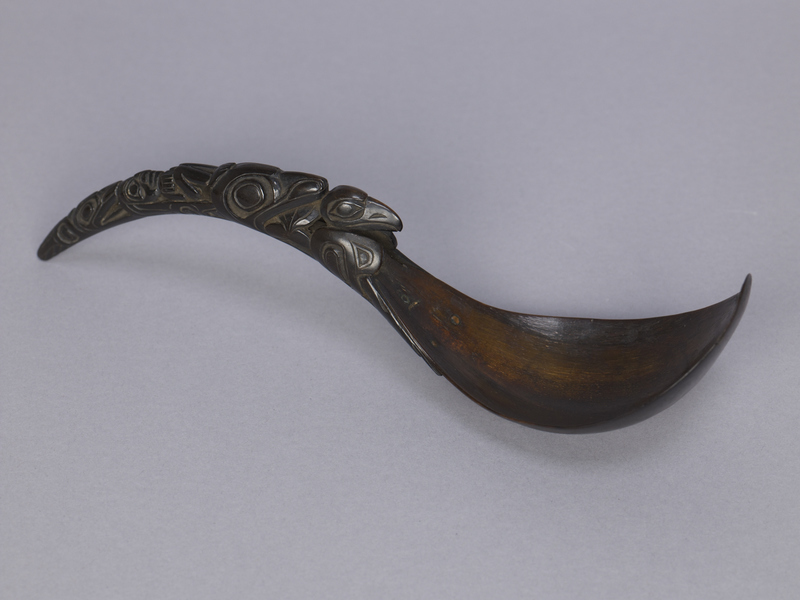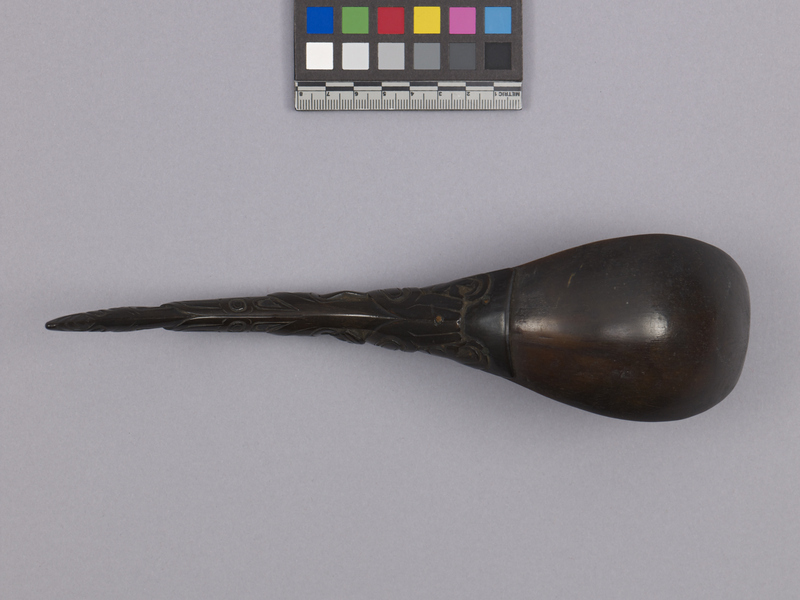Spoon Item Number: 3260/43 from the MOA: University of British Columbia



Description
Horn spoon with a carved handle. Multiple figures carved all the way up the handle to the point: a killer whale at the tip of its handle, with a human figure below, then a second whale with a halibut in its mouth, and just below its snout a raven. Handle attached to bowl by copper rivets.
History Of Use
Spoons were created from the horns of mountain sheep and mountain goats, for which the Haida traded with mainland peoples, as neither animal inhabits the islands of Haida Gwaii. The elaborate handles follow the natural curve of mountain-goat horn, while the bowl sections were formed by softening the horn through steaming or boiling, then cutting it, spreading it open at the base, and pressing it into a two-part wooden mold. Once the horn cooled, the final finishing and carving would begin, and the bowl was riveted to the handle.
Spoons of this kind were like the “Sunday silver” of high-ranking families. Not only were they designed like totem poles in terms of the arrangement and relative scale of their figures, but the imagery similarly functioned to represent episodes of stories and the privileges of their owners.
Item History
- Made in British Columbia, Canada between 1840 and 1870
- Owned by Elspeth McConnell before August 12, 2017
- Received from Elspeth McConnell (Donor) on August 12, 2017
What
- Name
- Spoon
- Identification Number
- 3260/43
- Type of Item
- spoon
- Material
- abalone shell, copper metal and mountain goat horn
- Overall
- height 24.6 cm, width 6.4 cm, depth 6.4 cm
Who
- Culture
- Haida
- Previous Owner
- Elspeth McConnell
- Received from
- Elspeth McConnell (Donor)
Where
- Holding Institution
- MOA: University of British Columbia
- Made in
- British Columbia, Canada
When
- Creation Date
- between 1840 and 1870
- Ownership Date
- before August 12, 2017
- Acquisition Date
- on August 12, 2017
Other
- Condition
- good
- Accession Number
- 3260/0043